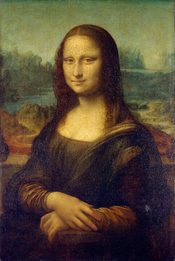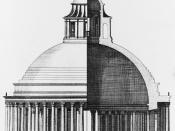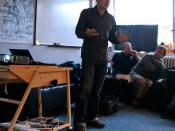The Renaissance covers the 200 years between 1400 and 1600. The two principal elements of the Renaissance style are: a revival of the classical forms originally developed by the ancient Greeks and Romans, and an intensified concern with secular life, in other words, an interest in humanism and affirmation of the importance of the individual. In this period, a general desire developed to examine all aspects of nature and the world. During this time, artists were no longer seen as mere artisans as in the Middle Ages, they were independent personalities.
To find a solution to formal and visual problems, most artists dedicated to scientific experimentation, and developed mathematical or linear perspective, a system in which all objects in a painting or sculpture are related both proportionally and rationally. Consequently, painters began to dedicate themselves more rigorously to the interpretation of landscape (trees, plants, flowers, mountains, etc.). Artists studied the effect of light out-of-doors and how the eye perceives all the diverse elements in nature.
They developed aerial perspective, in which objects become increasingly less distinct and less sharply colored as they recede from the eye of the viewer.
Although portrait was also developed as an specific style of painting, Renaissance painters achieved the greatest freedom with the history or narrative picture in which figures within a landscape or an architectural environment act out a specific story, taken either from classical mythology or Judeo-Christian tradition. This let the painter show their characters in full range of postures and poses, as well as in diverse emotional reactions and states.
In sculpture, the most outstanding artists were Filipo Brunelleschi, who developed linear perspective and after becoming an architect he designed the dome of Florence Cathedral; Lorenzo Ghiberti, who was best known for his relieves; and finally Donatello, one of the most...



More types
This essay looks professional. Nice! But renaissance doesn't only come in one packet. Maybe you should mention the eras such as baroque, etc.
0 out of 0 people found this comment useful.